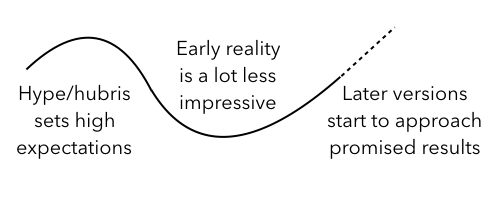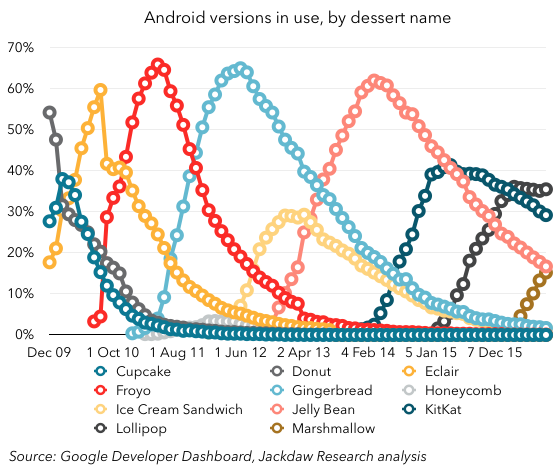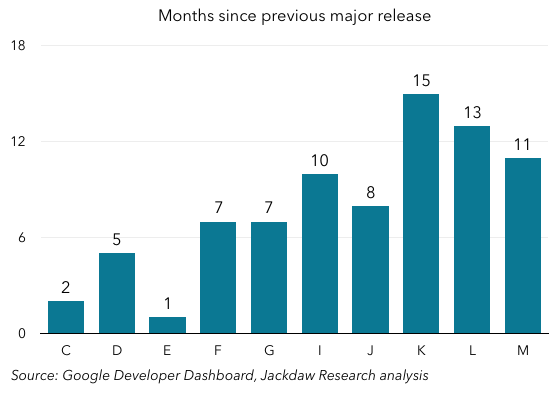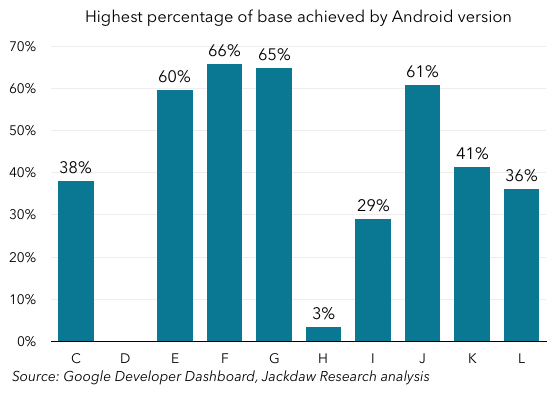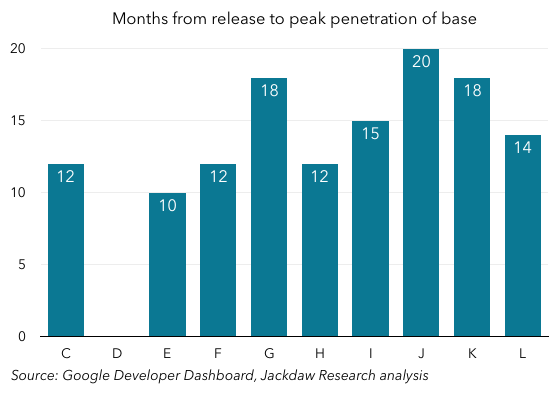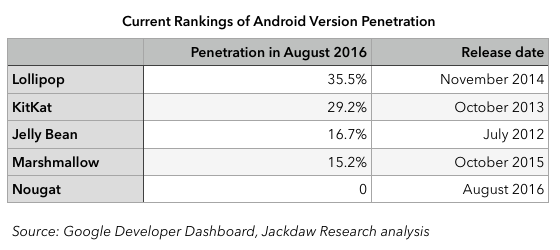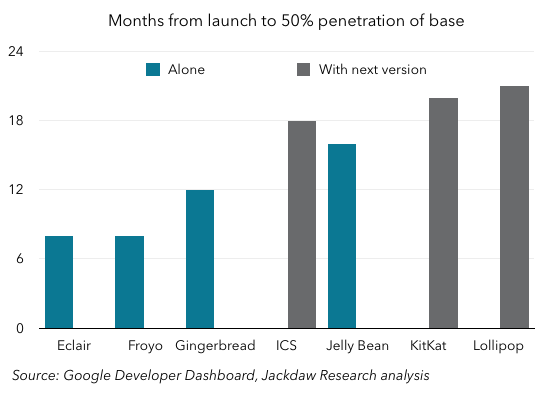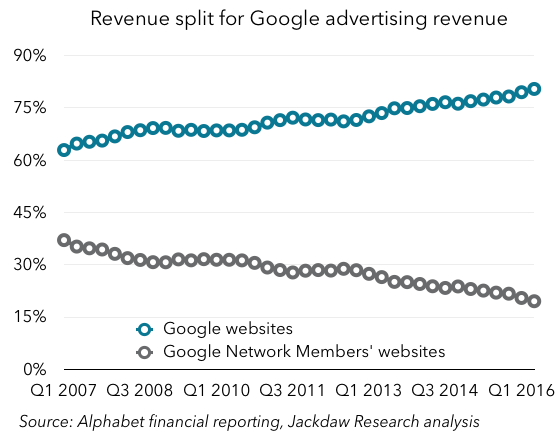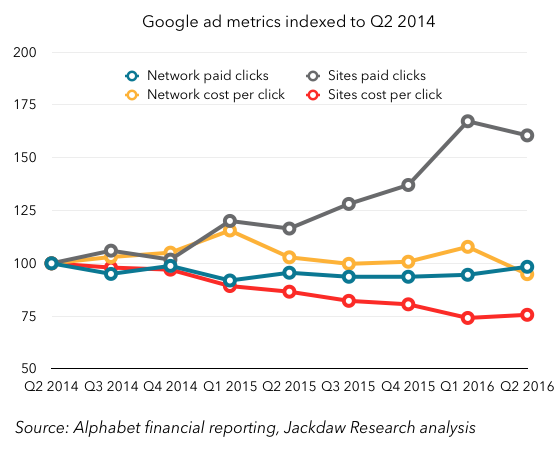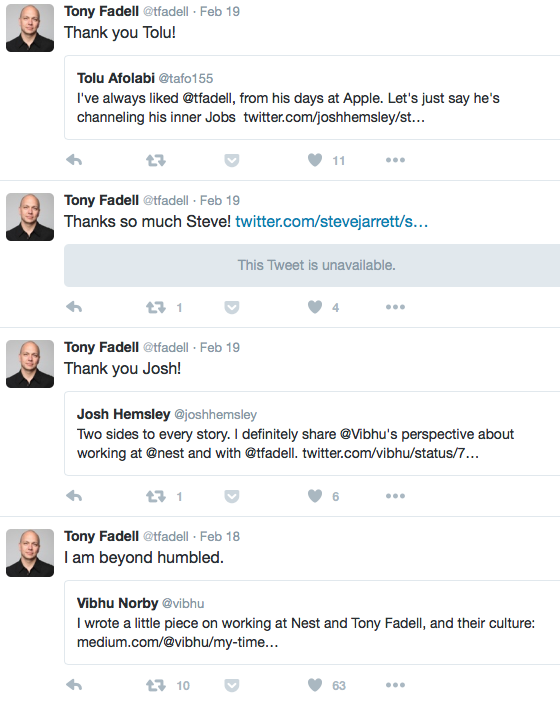This is my second post about Google’s event this week, and there will likely be more. The first tackled Google’s big strategy shift: moving from a strategy of gaining the broadest possible distribution for its services to preferring its own hardware in a narrower rollout. Today, I’m going to focus on the Pixel phones.
Positioning Pixel as a peer to the iPhone…
The Pixel phones are the most interesting and risky piece of this week’s announcements, because they go head to head against Google’s most important partners. One of my big questions ahead of time was how Google would address this tension, and in the end it simply didn’t, at least not during the event. The way it addressed it indirectly was to aim its presentation and the phones at the iPhone instead of at other Android phones. There were quite a few references to the iPhone during the event, and they’re worth pulling out:
- A presenter said as an aside, “no unsightly camera bump” when describing the back of the Pixel phones
- The unlimited photo and video storage was positioned against the iPhone, explicitly so when an image of iOS’s “Storage Full” error message was shown on screen (as it was in a recent Google Photos ad campaign)
- The colors of the Pixel phones have names which appear to mock Apple’s color names
- The pricing of the Pixel phones is identical to the pricing for the iPhone 7, right down to the first-time $20 increase to $769 for the iPhone 7 Plus from the earlier $749 price point for the larger phones, despite the fact that the larger Pixel has no additional components
- A reference to the 3.5mm headphone jack in the Pixel commercial.
Google is attempting to position the Pixel as a true peer to the iPhone, unlike Nexus devices, which have usually been priced at a discount with feature disparities (notably in the cameras) to match. The pricing is easily the most telling element here, because there’s literally no other reason to match the pricing so precisely, and Google could arguably have benefited from undercutting the iPhone on price instead. Rather, Google wants us to see the Pixel as playing on a level playing field with the iPhone. This is very much a premium device, something that Chrome and Android exec Hiroshi Lockheimer explicitly addressed in an interview with Bloomberg published this week:
Premium is a very important category. Having a healthy premium device ecosystem is an important element in an overall healthy ecosystem. For app developers and others. It’s where certain OEMs have been successful, like Samsung. It’s where Apple is also very strong. Is there room for another player there? We think so. Do we think it’s an important aspect of Android? Yeah, absolutely.
What’s most interesting to me is the question and answer near the end there: “Is there room for another player there? We think so.” Given that the premium smartphone market is basically saturated at this point, that’s an interesting statement to make. Unlike, say, in the low end of the smartphone market, where there’s still quite a bit of growth, the only sense in which there’s “room” for another player at the premium end is by squeezing someone else out. Google clearly wants that to be Apple, but it’s arguably more likely to be Samsung if it’s anyone.
We’ve seen from long experience that switching from iOS to Android is much rarer than the other way, and so Google is far more likely to take share from Samsung than Apple, even with its overt focus on competing against the iPhone. In addition, this is fundamentally an Android phone with a few customizations, and will be seen as such, and therefore in competition with other Android devices, rather than the iPhone, for all Google’s focus on the iPhone in its messaging.
…while also mocking the iPhone (and iPhone owners)
But perhaps the biggest misfire here is the schizoid positioning versus the iPhone – on the one hand, the Pixel borrows very heavily from the iPhone – the look, especially from the front; the two sizes; the pricing, the focus on the camera; the integrated approach to hardware and software (of which more below); and so on. And yet at the same time Google seems determined to mock the iPhone, as evident in the color naming and in other ways throughout the presentation. If you want to go head to head against the iPhone, you do it in one of two ways: you show how you’re different (as Samsung has arguably done successfully), or you show how you’re the same but better. You don’t do it by aping lots of features and then mocking the very thing you’re aping at the same time (and by implication its customers, the very customers you’re going after).
True integration, or just a smokescreen?
The other major element of this strategy, of course, is that Google is now capitulating to the Apple strategy of many years and more recently Microsoft’s Surface strategy: the company that makes the best hardware is the company that makes the OS. Again, the approach is best encapsulated in an interview, this time with Rick Osterloh, head of Google’s new consolidated hardware division:
Fundamentally, we believe that a lot of the innovation that we want to do now ends up requiring controlling the end-to-end user experience.
What’s odd is that there seems to be relatively little evidence of this approach in what was announced on Tuesday. Is there really anything in the Pixel phones that couldn’t have been achieved by another OEM working at arm’s length from Google? One of the biggest benefits of taking this integrated approach is deep ties between the OS and the hardware, but from that perspective, Google isn’t actually allowing its Android division to get any closer to its own hardware team than other OEMs. It’s only integration with other Google services (outside of Android) where the Pixel team got special access, and even then only because they’re the only ones who have asked to do so.
All of this undermines Google’s argument that the Pixel is somehow in a different category because it’s “made by Google” (even leaving aside the fact-checking on that particular claim from a hardware perspective). This phone could easily have been made by an OEM with the same motivations – the big difference is that no OEM has precisely those motivations, not that the Pixel team was somehow given special access.
In fact, this gets at the heart of one of the main drivers behind the Pixel – Google reasserting control over Android and putting Google services front and center again. I’ve written about this previously in the context of Google’s attempts to do this through software, as exemplified by its I/O 2014 announcements. But those efforts largely failed to reclaim both control over Android and a more prominent role for Google services on Android phones. As a result, Google’s relationship with Android releases has continued to be analogous to that of a parent sending a child off to college – both have done all they can to set their creation on the right path, but have little control over what happens next.
If, though, this is the real motivation behind Pixel (and I strongly suspect it is), then all this stuff about targeting the iPhone and tightly integrated hardware and software is really something of a smokescreen. I would bet Google’s OEM partners can see that pretty clearly too, and for all Google executives’ reassurances that the OEMs are fine with it, I very much doubt it.

